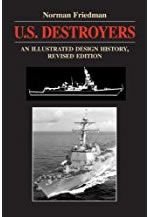|
|
USS Tucker (DD-374) was a Mahan class destroyer that fought at Pearl Harbor, and on escort duties for most of 1942 before sinking after hitting a mine on her way to Espiritu Santo on 3 August 1942.
The Tucker was named after Samuel Tucker, who served in the Continental Navy during the War of Independence and the War of 1812.
The Tucker was laid down at the Norfolk Navy Yard on 15 August 1934, launched on 26 February 1936 when she was sponsored by Mrs Leonard Thorner and commissioned on 23 July 1936.
After her shakedown cruise the Tucker was allocated to the Battle Fleet with her base at San Diego. She was part of Destroyer Squadron 3, Destroyer Division 6, and took part in the normal life of the fleet. However she was photographed in Massachusetts Bay on 17 November 1937, suggesting she returned to the East Coast at some point in that year.
At one point in the late 1930s she was photographed with canvas sails rigged on both of her masts, possibly in an attempt to extend her cruising range.
In February 1939 she took part in Fleet Problem XX in the Caribbean, which was observed by President Roosevelt from the Houston (CA-30).
In the spring of 1940 she joined the rest of the Pacific Fleet as it moved its base from San Diego to Hawaii. The Tucker spent most of the year moving between the west coast and Hawaii.
On 14 February 1941 she returned to Pearl Harbor from San Diego in time to take part in a cruise in the South Pacific, visiting New Zealand. She briefly returned to San Diego in September (and was photographed there with Destroyer Division 6, Destroyer Squadron 3 in October 1941), but was back at Hawaii in November.
When the Japanese attacked Pearl Harbor on 7 December the Tucker was lined up in a nest of destroyers alongside the tender USS Whitney (AD-4). She was in the middle of the line, with two destroyers on either side.
The first man to react on the Tucker was GM2c W.E. Bowe, who opened fire with a machine gun. A few minutes later the aft 5in guns joined in. The entire nest of destroyers opened fire with whatever weapons they could activate in time, and claimed two victories. In the post-action report her commanding officer claimed three or four victories just for the Tucker including two for Bowe on his .5in machine gun!
After the attack the Tucker patrolled off Pearl Harbor.
1942
The Tucker spent the first four months of 1942 escorting convoys between Hawaii and the US West Coast.
She was then sent to the South Pacific to help strengthen US defences of the supply lines between the US and Australia. She escorted the Wright (AV-1) to American Samoa, then on to Fiji and finally Noumea in New Caledonia. The Tucker then continued on to Sydney, arriving on 27 April.
After some time in Australian waters the Tucker returned to Suva, Fiji, on 3 June 1942. She spent June and the first week of July operating from Suva.
On 10 July she replaced the Boise (CL-47) on convoy escort duties, before arriving at Auckland on 30 July.
She then returned to Fiji, from where on 1 August she left to escort the SS Nira Luckenbach to Espiritu Santo. On 2145 on 3 August 1942 the Tucker hit a mine in the Segond Channel, at the start of the last phase of the voyage. The Tucker was critically damaged and soon began to fold up. Three men were killed in the explosion, and the survivors soon abandoned ship.
The Tucker actually stayed afloat for some time. Late on 3 August YP-346 arrived, followed by the Breese (DMS-18), but attempts to tow the Tucker into shallow water failed and she sank at 0445 on 4 August. Photographs of her being towed by YP-346 show her with her back broken, her bows and stern above the water and her amidships section below water, with the funnels leaning in towards each other. Her bows including the forward 5in gun were still visible above the water on 5 August. Her crew was picked up the Aylwin (DD-355)
The Tucker had hit a mine that had been laid by American minelayers on 2 August, but the information had not been passed onto the Tucker.
Tucker received one battle star for her World War II service, for Pearl Harbor
Displacement (standard) |
1,487.9 standard |
Displacement (loaded) |
2,102.6t |
Top Speed |
37.8kts at 44,477shp at 1,749t on trials (Mahan) |
Engine |
2-shaft General Electric turbines |
Range |
6,500nm at 12kts design |
Length |
341ft 3in |
Width |
35ft 6.5in |
Armaments |
Five 5in/38 DP guns |
Crew complement |
158 |
Laid down |
15 August 1934 |
Launched |
26 February 1936 |
Commissioned |
23 July 1936 |
Sunk |
4 August 1942 |
 U.S. Destroyers: An Illustrated Design History, Norman Friedmann .
The standard history of the development of American destroyers, from the earliest torpedo boat destroyers to the post-war fleet, and covering the massive classes of destroyers built for both World Wars. Gives the reader a good understanding of the debates that surrounded each class of destroyer and led to their individual features.
U.S. Destroyers: An Illustrated Design History, Norman Friedmann .
The standard history of the development of American destroyers, from the earliest torpedo boat destroyers to the post-war fleet, and covering the massive classes of destroyers built for both World Wars. Gives the reader a good understanding of the debates that surrounded each class of destroyer and led to their individual features.